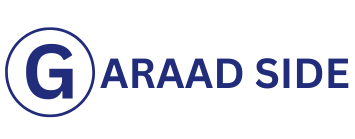Introduction: A New Era of Learning Through Play
Education in 2025 looks nothing like it did just a decade ago. Traditional lectures, static textbooks, and rote memorization are giving way to dynamic, interactive, and student-centered approaches. Among the most powerful trends reshaping classrooms and online courses alike is Gamified Learning — the practice of using game mechanics and design elements in educational contexts.
Gamified Learning transforms learning into an engaging, motivating, and results-driven experience. By leveraging points, badges, leaderboards, and challenges, it taps into human psychology to encourage participation, persistence, and mastery. This article explores what Gamified Learning is, why it’s trending, its benefits, tools, and future innovations.
Section 1: What Is Gamified Learning?
Gamified Learning involves integrating elements of gameplay—such as scoring, competition, and rewards—into educational activities. It doesn’t necessarily mean turning lessons into full-fledged video games but rather infusing game dynamics to improve learner engagement.
Core Elements of Gamified Learning:
- Points and Scoring Systems: Rewarding students for completing tasks.
- Badges and Achievements: Visual representations of milestones.
- Leaderboards: Ranking learners to spark healthy competition.
- Levels and Progression: Structured pathways showing advancement.
- Challenges and Quests: Engaging activities beyond routine tasks.
By 2025, nearly every major online learning platform has introduced gamified features to keep learners hooked.
Section 2: Why Gamified Learning Is Trending in 2025
Several factors have converged to make Gamified Learning one of the hottest educational trends:
- Rise of Digital Natives:
Today’s students grew up with smartphones and games. Gamified approaches meet them where they already are. - Remote Learning Explosion:
With online education mainstream, educators need ways to replicate the engagement of physical classrooms. Gamification bridges that gap. - Proven Impact on Retention:
Research shows gamification can boost retention rates, motivation, and knowledge application. - Corporate Training Demand:
Businesses use gamified modules for employee training, increasing completion rates and skill acquisition. - Affordable Technology:
Low-cost platforms and software make it easy for even small schools to implement gamification.
Section 3: Benefits of Gamified Learning
1. Increased Motivation
Rewards and progress indicators provide immediate gratification, encouraging continued participation.
2. Enhanced Engagement
Interactive elements break the monotony of traditional learning, making lessons more enjoyable.
3. Better Knowledge Retention
Gamification reinforces learning through repetition, feedback, and active participation.
4. Development of Soft Skills
Problem-solving, teamwork, and time management are often embedded in gamified activities.
5. Personalized Learning Paths
Adaptive gamified systems adjust difficulty levels based on individual learner performance.
6. Real-Time Feedback
Immediate scoring and progress tracking allow learners to correct mistakes instantly.
Section 4: Examples of Gamified Learning in Action
1. preply learners
Language learning app that awards points, streaks, and badges to keep users motivated.
2. Kahoot!
Interactive quizzes that turn classrooms into game shows, boosting participation and energy.
3. tank games
Transforms classroom management into an tanks adventure where students earn points for positive behaviors and entertained.
4. Khan Academy Missions
Uses badges and progress tracking to encourage students to complete modules.
5. Corporate Platforms (Axonify, EdApp)
Companies gamify training sessions to improve employee engagement and skill retention.
Section 5: How Gamified Learning Works
Gamified Learning leverages psychological principles such as:
- The Dopamine Effect: Rewards release dopamine, creating positive reinforcement.
- Goal Orientation: Levels and badges give learners clear objectives.
- Social Comparison: Leaderboards spark healthy competition.
- Immediate Feedback: Points and scores deliver instant performance insights.
By combining these principles, gamified education turns learning into a cycle of challenge, achievement, and mas
Section 6: Designing Effective Gamified Learning Experiences
Educators and course designers should consider:
1. Aligning Game Elements with Learning Objectives
Points and rewards should reinforce, not distract from, key outcomes.
2. Maintaining Balance
Too much competition can discourage some learners. Include collaborative options.
3. Providing Multiple Pathways
Allow learners to progress at their own pace, unlocking new levels as they master content.
4. Offering Meaningful Rewards
Badges or certificates should reflect real skills gained.
5. Continuous Feedback and Iteration
Collect data on learner performance and tweak game mechanics accordingly.
Section 7: Gamified Learning in Different Contexts
Schools and Universities
Teachers integrate quizzes, interactive simulations, and team-based challenges to supplement lectures.
Corporate Training
Employees engage in scenario-based challenges, earning rewards for applying new skills.
Professional Development
Micro-credentials and gamified continuing education keep adults motivated.
Language Learning Apps
Streaks, leaderboards, and adaptive difficulty sustain daily practice.
Section 8: Challenges of Gamified Learning
While promising, gamification in education also faces hurdles:
- Overemphasis on Rewards: Can shift focus from intrinsic to extrinsic motivation.
- Equity and Access Issues: Some schools lack technology to implement gamified systems.
- Data Privacy Concerns: Platforms collect student performance data.
- One-Size-Fits-All Design: Not all learners respond positively to competition.
Solutions: Provide blended approaches, ensure secure platforms, and diversify rewards to appeal to different learner types.
Section 9: The Future of Gamified Learning Beyond 2025
Gamified Learning will evolve with emerging technologies:
- Virtual Reality (VR): Immersive simulations where students “experience” lessons.
- Augmented Reality (AR): Overlaying educational content onto the real world.
- AI-Powered Personalization: Algorithms adjusting challenges dynamically.
- Blockchain Badges: Secure, verifiable credentials for skills gained.
- Metaverse Classrooms: Persistent virtual spaces where learners meet, play, and learn together.
These developments will make gamified education more immersive, equitable, and effective.
Section 10: Action Steps for Educators and Learners
- Start Small: Add points, quizzes, or badges to existing lessons.
- Choose the Right Platform: Test apps like Kahoot!, Quizizz, or Classcraft.
- Blend Approaches: Combine gamification with traditional teaching for balance.
- Measure Outcomes: Track engagement, retention, and performance improvements.
- Seek Feedback: Ask learners what motivates them most and adjust accordingly.
Conclusion: Transforming Education with Gamified Learning
Gamified Learning is more than a buzzword — it’s a proven strategy for boosting motivation, retention, and enjoyment in education. In 2025 and beyond, its influence will continue to grow, empowering students, teachers, and organizations to achieve better outcomes through play-based approaches.
By embracing gamification, educators can create dynamic environments where learners feel challenged, rewarded, and inspired to reach their full potential.

